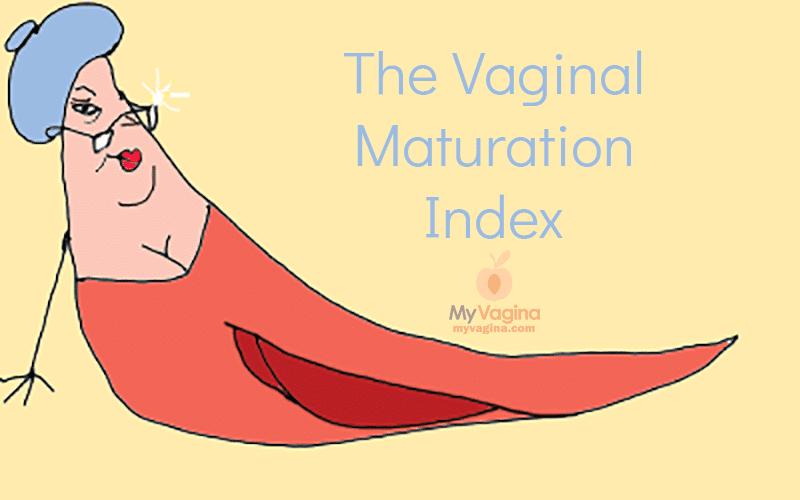The Vaginal Maturation Index (VMI) is an assessment done on a mid-vaginal-wall sample to establish the oestrogen effect in the body. This test can help determine the stages of menopause or help identify an underlying hormonal issue.
The vaginal maturation index is used with other tests and a patient history regarding symptoms and fertility status.
The vaginal maturation index is a tool for diagnosing different types of tumours (feminising, virilising), ovarian dysfunction, and pituitary gland dysfunction.
Women taking tamoxifen, a breast cancer drug that blocks oestrogen, may have increased vaginal cell maturation.
Is the test for how ‘mature’ a vagina is, or how ‘mature’ the cells are?
While the name may suggest a test for the ‘age’ of the vagina, ‘maturation’ refers to the maturation of the cells from immature parabasal cells (immature cells) to superficial cells (the most mature). The vaginal maturation index has nothing to do with the age or maturity of a person.
What the index tells us is how much oestrogen is affecting your cells. The more mature your cells, the more oestrogen you have.
When nearing menopause, for example, the oestrogenic effect on cells naturally lowers with reducing oestrogen production, leading to low cell maturation.
How the VMI test is performed
The VMI test is performed using a wet prep or wet mount (microscopic analysis of vaginal fluids at the doctor’s office), or taken at the same time as a Pap smear. VMI tests, however, have largely been superseded by blood hormone testing.
Despite this, the VMI still has relevance in many clinical settings. Women may be asked to take the sample themselves, which is a reliable cell collection method.
How is the VMI established?
The VMI is a ratio obtained with three main cell types found in the vaginal walls:
- Parabasal cells
- Intermediate cells
- Superficial cells
Basic description of the vaginal epithelial cells
- Parabasal cells are not affected by oestrogen and progesterone, being immature cells. This means an absence of oestrogenic stimulation.
- Intermediate cells are somewhat mature, having been affected by progesterone.
- Superficial cells are the most mature, having been affected by oestrogen.
What the VMI test results mean
- If there are a lot of parabasal cells, it indicates a lack of oestrogen in the tissues.
- Intermediate cells have no value here, as they are based on progesterone, not oestrogen.
- If there is a large percentage of superficial cells, there is a lot of oestrogenic stimulation.
What the numbers and percentages mean
VMI = % cells parabasal, % intermediate cells and % superficial cells. The findings will be presented in a 0/0/0 format, indicating parabasal, intermediate, and superficial cell count.
How the results vary depending on age and stage
There are times where the hormonal stage someone is at will change the vaginal maturation index findings or increase/decrease variability. These ages and stages include:
- During infancy, oestrogen levels are high in babies due to the mother’s hormone levels, giving high intermediate readings
- During childhood, immature parabasal cells will get the highest reading, indicating little to no effect of oestrogen
- Just before puberty, scores vary between all three types of cells as the effect of oestrogen kicks in (more intermediate cells than superficial cells)
- During ovulation, the effect of oestrogen is generally somewhat greater (more intermediate and superficial cells)
- During menstruation, progesterone tends to trump oestrogenic effects, reducing the overall oestrogenic effect
- During pregnancy, the oestrogenic effect on intermediate cells is more significant
- Postpartum, immature parabasal cells are the most abundant due to oestrogen being out of the picture for a while, as other hormones for breastfeeding kick in
- Perimenopausal scores have high variability due to hormones being unpredictable
- Postmenopausal scores will clearly show no parabasal cells and no superficial cells
Vaginal Maturation Index (VMI) numbers:
- ≤ 49 means there is not very much, or zero, oestrogenic effect on cells
- 50–64 shows a moderate oestrogenic effect on cells
- 65–100 shows a dominant fertile (premenopausal) oestrogenic environment
References
- Hess R, Austin RM, Dillon S, Chang CC, Ness RB. Vaginal maturation index self-sample collection in mid-life women: acceptability and correlation with physician-collected samples. Menopause. 2008 Jul-Aug;15(4 Pt 1):726-9. doi: 10.1097/gme.0b013e31816c5541.
- Clin Exp Obstet Gynecol. 1998;25(4):121-4. The influence of tamoxifen on the maturation index of vaginal epithelium. Friedrich M, Mink D, Villena-Heinsen C, Woll-Hermann A, Wagner S, Schmidt W.

Get a fresh perspective with a qualified, experienced vulvovaginal specialist naturopath.
This product has multiple variants. The options may be chosen on the product page
The most comprehensive vaginal microbiome test you can take at home, brought to you by world-leading vaginal microbiome scientists at Juno Bio.
Easy-to-use BV and AV treatment program.

Promote and support a protective vaginal microbiome with tailored probiotic species.







